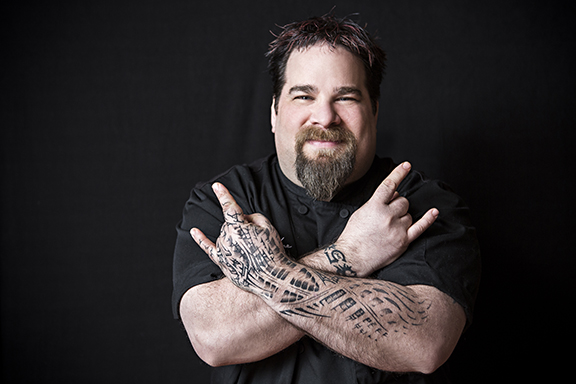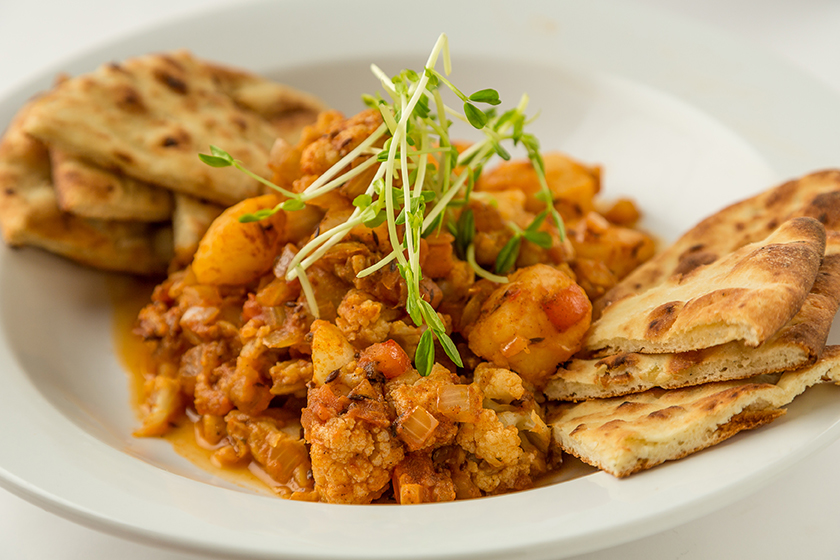All it takes is a little bit of ingenuity and a dash of inspiration and Chef/Partner Eric LeVine of New Jersey’s Morris Tap and Grill will show you how you can incorporate action buffets into your next event.
Focusing on three or four different countries and their signature cuisines, guests can pick and choose which flavor profile suits their mood, while chefs restock the tables with fresh ingredients.

Tips & tricks
“It’s all about accessibility and speed, preplanning, laying out your elements of design, and not interfering with the flow,” says LeVine. And make sure you don’t forget about the person who is cooking behind the line as well.
“One of the things you can do is to have it ready, but don't interfere with the flow. That's a really important thing,” he says.
To set up a rice buffet, have three to four different types of rice ready to serve. Set up separate vessels according to the cultures featured. For example, use a wok for an Asian dish or a risotto bowl for dishes with an Italian vibe. This will keep the entire activity consistent to the specific continent of the guest’s choice and offer them the ability to customize their dish.
“The rice mixes are done ahead of time, in either some kind of decorative chafing dish or steamed basket,” he says, “So texture stays, as does the shape.”
To change things up, LeVine will sometimes create a single station dedicated to just one culture. When he creates a wok station, for example, he preps the bowls in front of guests, then gives them the opportunity pick and choose the mix and toppings. He provides the sauces, whether it is scallion ginger sauce, or sweet and sour, or even a hearty vegetable stock.
When you prepare dishes according to his recommendations, guests will not only have the option to choose the meat, the sauce, and the vegetable to top off an ethnically diverse dish, but they can learn where the meat comes from. LeVine enjoys creating entire action buffets honing in on a specific cut of meat, using only lamb, beef, or pork loin so the texture and layering of the meal is consistent throughout.
Ancestral inspiration
It all started when he was a kid. His grandmother was the master chef of his household and she inspired him to create the diverse dishes one can find today in his kitchen—including not allowing anything go to waste. “Where she came from…they used every part of the animal,” he says.
In the past, hunters would wear an animal’s fur on their back to keep them warm, use their bones to stabilize their homes, and eat the rest so they could survive another season. This is a lesson that LeVine won’t soon forget, as he frequently incorporates his grandmother’s methods into his cooking routine.
She didn’t only teach him how to make mouthwatering, savory meat dishes, she also made a cake that packs a punch. “She had this honey cake,” LeVie opined. “It’s included in my cookbook, but I can’t remember what kind of cake it was. All I can remember is that she used to spike the hell out of it with rum! I was raiding her inventory the whole time.”
In the near future
In keeping with his grandmother’s way of cooking, LeVine would like to introduce more people to new foods that they might not otherwise have the opportunity to try. This year, he plans to create dishes with Middle Eastern and Indian flavor profiles, using different blends like cinnamon and cardamom to season exotic meats.
“Whether it’s emu or some kind of lamb cut. People don't use liver a lot,” he says. “In those cultures, they use every part of the animal. Pig ears, sautéed jowls. They are always preserving, curing, smoking…”
According to LeVine, it’s important to educate guests as to what they’re having; it’s not just about filling up a plate and going on to the next station.
“It’s not just about presentation. It’s a labor of love; it's what you do. You want to create something new and fun. You have to be able to offer that.”
For Aloo Gobi, LeVine’s current favorite recipe, he divulges his secret to bringing cultural diversity to the table.

Aloo Gobi Masala
24 pcs
Ingredients
1 head cauliflower, cut into 1inch florets
3 potatoes, peeled and cut into 1inch chunks
1 Tbsp olive oil
1 tsp cumin seeds
2 tomatoes, diced
1 onion, chopped
1 tsp salt
1 tsp curry powder
Method
1. Place the cauliflower in a large, microwavesafe dish; cook in microwave on High for 3 minutes. Transfer the cauliflower to a bowl and set aside. Put the potatoes in the dish and cook in the microwave on High for 4 minutes. Pour into the bowl with the cauliflower.
2. Heat the olive oil and cumin seeds in a large skillet over mediumhigh heat until the cumin swells and turns golden brown; stir the onions into the oil and cook about 3 minutes. Add the tomatoes and cook and stir another 3 minutes. Fold the cauliflower and potatoes into the mixture. Season with the curry powder and salt. Continue cooking until completely hot, 3 to 5 minutes.
Bagara Baingan
Serves 2
This is a traditional recipe originating from India. LeVine’s goal is to introduce Westerners to the delectable delights of Eastern food.
Ingredients
6 purple baby brinjals (eggplant)
2 Tbsp white sesame seeds
2 Tbsp peanuts
2 Tbsp grated coconut
1 onion, chopped fine
1” piece of ginger
2 garlic cloves (or 2 tsp ginger garlic paste)
¼ tsp turmeric powder
1 tsp jeera/cumin seeds
1 tbsp coriander powder/malli podi
1 tsp red chili powder (or to taste)
A small lemon-sized ball of tamarind
1 Tbsp oil
Salt to taste
Fresh coriander leaves for garnish
Method
1. Dry roast the peanuts and sesame seeds separately until golden brown. Set aside to cool. Then, grind together with the coconut and a little water to form a smooth paste.
2. Extract the tamarind paste in 1 cup warm water. Grind the ginger and garlic together into a paste (if not using premade paste.)
3. Fry the brinjals (eggplant) in oil until soft but still holds shape. Drain and set aside. In the same oil, fry the onions and ginger garlic paste until golden. Then add the ground paste and fry for a minute.
4. To this, add turmeric powder, chilli powder, jeera, coriander powder, and salt. Mix well and fry for another minute.
5. Add the tamarind water, mix, then add the brinjals and cook closed for 5 to 10 minutes. Garnish with fresh coriander leaves before serving.
Chef Eric LeVine is Chef/Partner for Morris Tap & Grill, Randolph, NJ and the author of Small Bites, Big Flavor.

